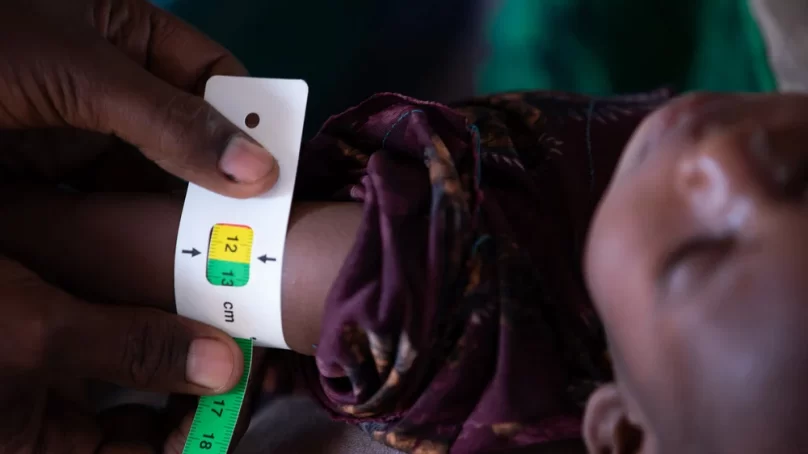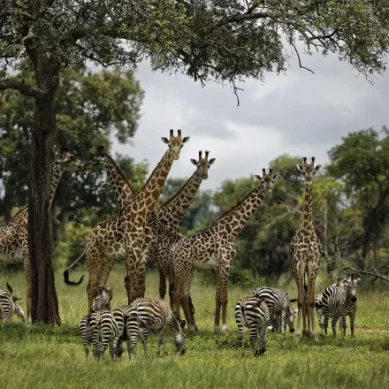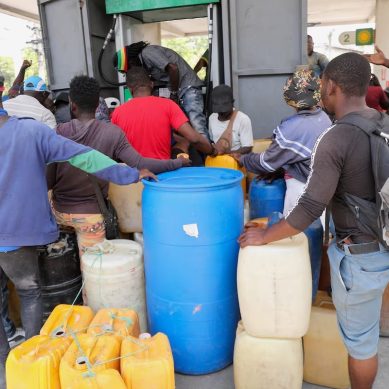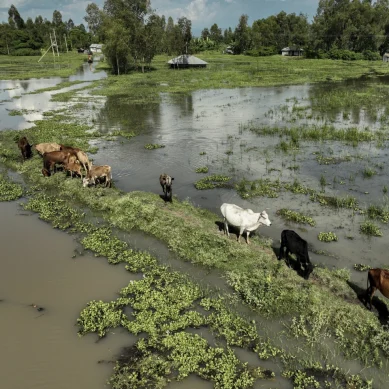
Somali famine analysis that was undertaken by the country-level Technical Working Group (TWG) of the Integrated Food Security Phase Classification (IPC) system, made up of UN agencies that operates in 35 food insecure countries and is typically government-led, says the imminent situation in eastern Africa country would have been avoided.
The equivalent of TWG with an identical system, the Cadre Harmonisé, covers West Africa.
The TWG normally brings 50 to 100 analysts together to examine the evidence, drawing on the existing data from humanitarian agencies, and groups like the US-funded Famine Early Warning Systems Network (FEWS NET). The number crunching usually takes a couple of weeks.
In the case of Somalia, three teams were spread between Mogadishu, Hargeisa in Somaliland, and north-central Galkayo. The teams were then brought together to consolidate the data in a final week-long meeting in Nairobi.
When famine is suspected – or more controversially, no consensus is reached on the evidence – a Famine Review Committee (FRC) is triggered. Made up of around five independent experts, the committee validates the TWG’s findings.
Its conclusions can differ. That was the case in South Sudan’s eastern county of Pibor in 2020. Government-aligned members of the TWG had downplayed the severity of the crisis, rating it “catastrophe”, while the FRC determined “famine was likely”.
There was “clear political interference”, said a senior aid official, who asked not to be named. “Part of the TWG was trying to suppress the possibility of Phase 5 [Famine].”
Does a declaration matter? It “triggers a lot of action”, said Lopez. In 2011, there was a doubling of funding for Somalia within days of the declaration.
But a focus on famine tends to imply the IPC’s other phases of food insecurity are somehow tolerable. And while famine typically affects relatively few people, millions can be in “emergency” situations with hunger-related deaths – or “excess mortality” in IPC’s dispassionate definition.
“The problem is that decision-makers want to know whether there is famine or not before they act to the extent that is required,” said Lopez. “But people can be in Phase 4 for a long time, with excess mortality. It’s already a disaster and requires a strong response.”
The hard lesson from Somalia’s famine in 2011 – and the successful management of an extreme drought six years later – is that relief needs to be anticipatory rather than reactive. Apart from saving lives, it’s also financially prudent (however distasteful that may sound). Every $1 spent on disaster prevention saves more than $2 in future emergency costs.
The evidence bar for famine is deliberately high, designed to rule out the chance of false alarms and give donors confidence in the verdict. The flipside is that there are “relatively few protections” against missing the signals and failing to declare a famine when one is underway, researchers Daniel Maxwell and Peter Hailey point out.
It’s a particular problem in conflicts in which governments are involved, and where starvation is used as a weapon of war. In the long-running violence in Syria and Yemen, where city sieges have been a hallmark, it has been difficult to collect the detailed evidence needed to make a famine determination – even though general levels of hunger have been incredibly high.
“A famine declaration is a political act masquerading as a technical diagnosis.”
That could also be occurring in Ethiopia, where a government aid blockade of the northern region of Tigray – and now renewed fighting – threatens almost six million lives.
“The word ‘famine’ is highly charged,” analyst Alex de Waal, who has written extensively on the politics of famine, told The New Humanitarian. “That is why the Ethiopian government is so anxious to prevent humanitarian data-gathering in Tigray, and the Saudi-led coalition has been doing the same in Yemen.”
Given the limitations around data that can prejudice the evidence, a famine declaration “is a political act masquerading as a technical diagnosis”, said de Waal.
Somalia’s food crisis is also complicated by conflict. An estimated 900,000 people live in areas controlled by the jihadist group al-Shabab that have been battling successive weak central governments for more than two decades.
They are hostile to Western aid agencies, preferring to trumpet their own, limited relief efforts, or to grant access to small, local NGOs they trust – which they then “tax”. US counter-terror legislation also inhibits direct humanitarian engagement by US-funded agencies.
Griffiths on Monday called for the humanitarian community to be given “immediate and safe access to all those in need”, but told The New Humanitarian no talks were underway with al-Shabab to negotiate safe passage.
“Al-Shabab wants to monopolise legitimacy,” Mohammed Ibrahim Shire, a Horn of Africa analyst, told The New Humanitarian. “As such, everything has to go through them and be managed by them so that they can sustain this image of a ‘state actor in waiting’.”
That poses a dilemma for drought victims living in al-Shabab-controlled zones.
“They either have to flee to government-controlled areas and receive support there, or stay put and wait for al-Shabab’s humanitarian wing to deliver aid,” said Shire. “Whatever action they take, help is not always guaranteed.”
- The New Humanitarian report











